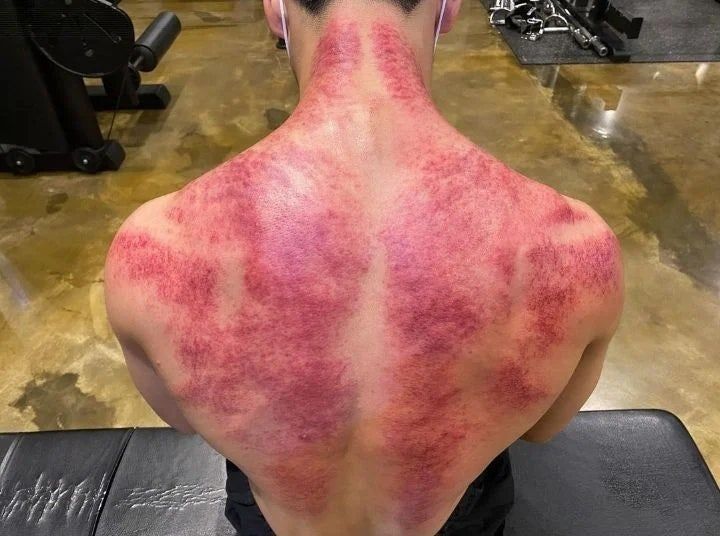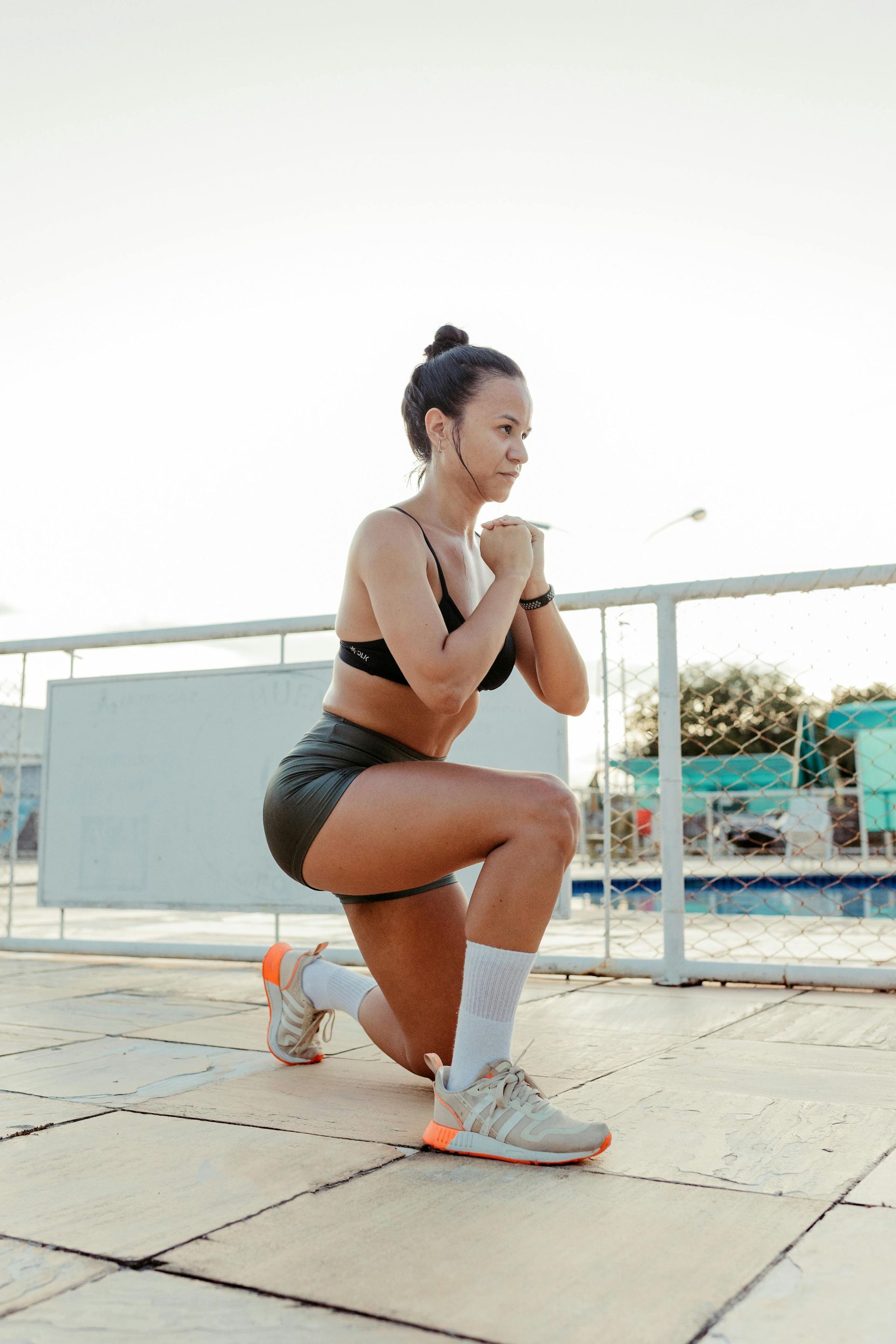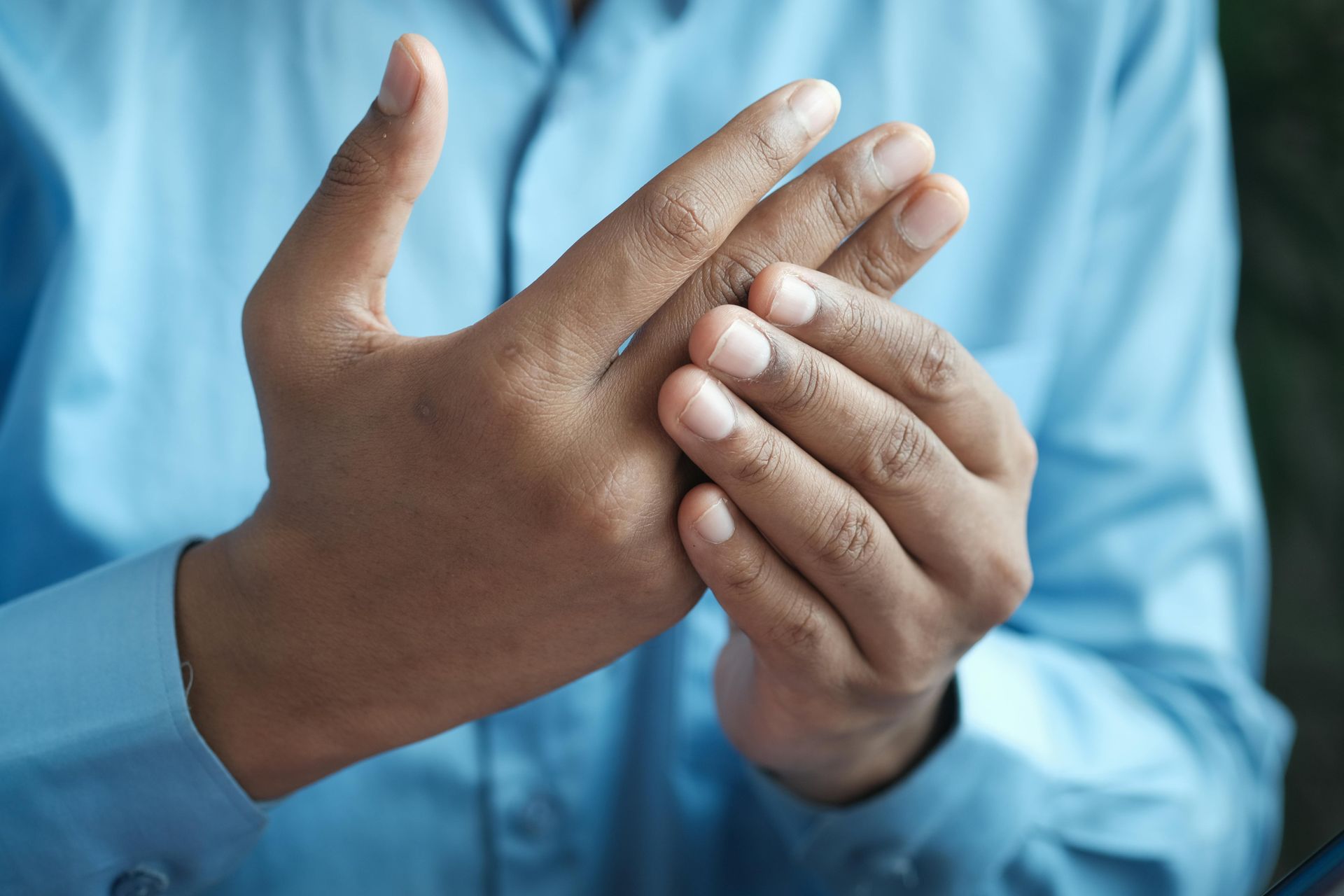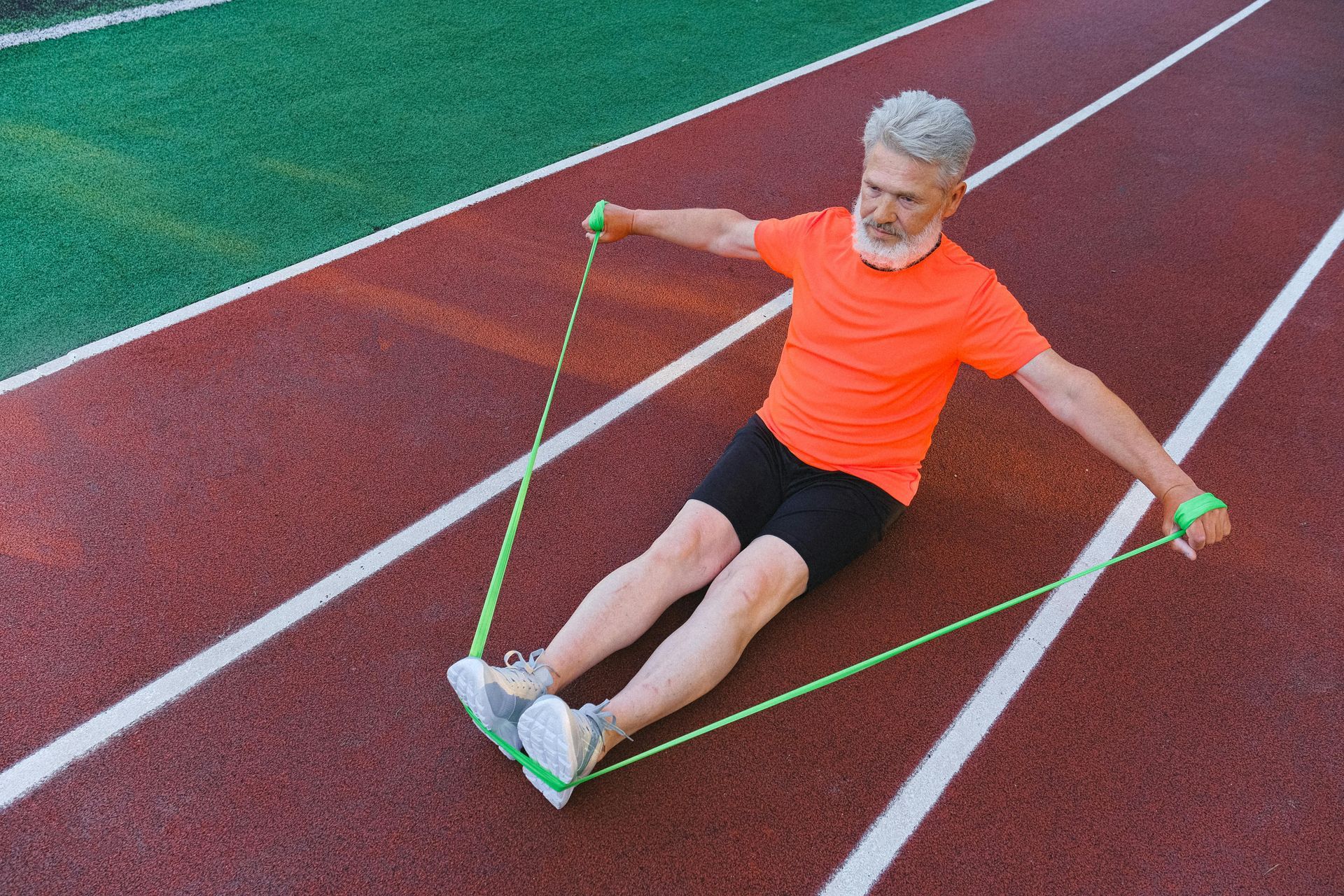The Power of Hip Internal Rotation: Lessons from Sports to Daily Movement
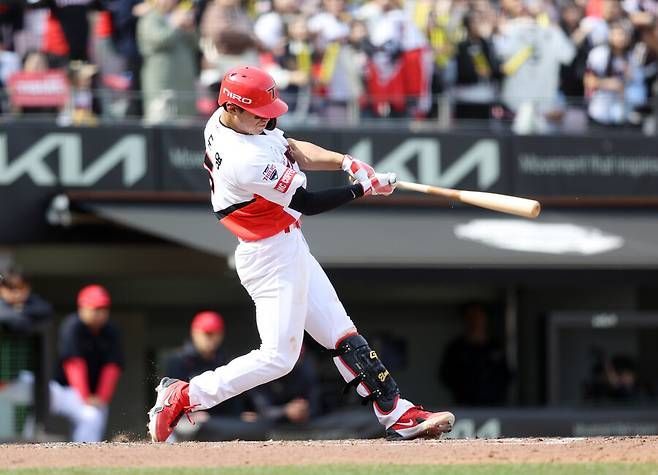
Understanding Hip Internal Rotation (HIR) and Why It Matters
Hip internal rotation (HIR) is the movement of the femur (thigh bone) rotating inward toward the midline of the body. It plays a crucial role in sports performance, injury prevention, and even daily movement patterns.
Muscles Involved in HIR
HIR is primarily controlled by several key muscle groups:
- Gluteus medius and minimus (stabilisers of the hip)
- Tensor fasciae latae (TFL) (assists in internal rotation and stability)
- Adductors (help control movement in the frontal plane)
- Piriformis (when in a certain hip position, it assists in internal rotation)
- Deep hip rotators (coordinate movements between the pelvis and the femur)
What Happens When These Muscles Are Weak or Overactive?
When hip internal rotators are weak, it can lead to:
- Reduced power in sports movements such as kicking, sprinting, cycling, cutting, and pivoting
- Limited range of motion, affecting balance and coordination
- Increased risk of hip, knee, and lower back pain due to compensatory patterns
When these muscles are overactive, it can result in:
- Hip impingement (pain when moving the hip in certain directions)
- Tightness and discomfort in the lower back, glutes, or IT band
- Increased risk of overuse injuries, such as groin strains and hamstring tightness
How HIR Improves Sports and Daily Movements
While Do-young Kim’s baseball performance demonstrates the importance of HIR in generating power, the same principle applies across various sports and everyday activities.
How HIR Affects Daily Movements
Even in non-sporting activities, poor HIR can lead to stiffness, discomfort, and inefficient movement patterns. HIR is essential for:
- Walking and Running: Proper HIR allows the legs to move naturally, preventing excessive strain on the knees and lower back.
- Climbing Stairs or Sitting Cross-Legged: Limited HIR can cause the knees and lower back to compensate, leading to discomfort over time.
- Lifting or Carrying Objects: Good HIR ensures better stability and force transfer through the hips, reducing strain on the lower back.
How HIR Enhances Weekend Sports Performance
Many weekend athletes experience tight hips, knee discomfort, or lower back pain due to limited hip rotation. Addressing this can lead to improved power, balance, and reduced injury risk in the following sports:
Golf – More Power and Consistency
Golf swings require hip rotation to generate power and control. Limited HIR can lead to:
- Loss of balance during the swing
- Overuse of the lower back, increasing strain
- Reduced distance and accuracy in shots
Improving HIR allows for better weight transfer, smoother rotation, and increased clubhead speed, helping golfers hit further with less effort.
Tennis – Better Agility and Stroke Power
HIR is crucial for quick directional changes and strong shots in tennis. Limited rotation can cause:
- Slower movement when pivoting to return shots
- Poor weight transfer, reducing shot power
- Increased risk of hip, knee, and lower back injuries
Better HIR helps players move more efficiently, react quicker, and generate more force in serves and groundstrokes.
Footy (AFL) – Faster Cuts and Kicks
Footy requires explosive direction changes and powerful kicking. Poor hip rotation leads to:
- Slower acceleration and agility
- Reduced kicking distance and accuracy
- Higher risk of hamstring, groin, and knee injuries
Enhanced HIR allows for quicker pivots, smoother strides, and more powerful kicks, improving overall agility on the field.
Running – Smoother Stride and Injury Prevention
Runners with limited HIR often compensate by overusing other muscle groups, leading to:
- Increased stress on the knees, ankles, and lower back
- Shortened stride length, reducing efficiency
- Higher risk of IT band syndrome, hip pain, and lower back discomfort
By improving HIR, runners can increase stride efficiency, reduce impact stress, and improve endurance.
Cycling – Better Pedaling Efficiency and Knee Health
Cycling involves repetitive hip movement, and poor HIR can cause:
- Knee misalignment, leading to discomfort
- Inefficient pedaling mechanics, reducing power output
- Tightness in the lower back and hips after long rides
Improving HIR ensures proper knee tracking, better force distribution, and smoother pedaling, reducing strain on the knees and hips.
Elite Athletes Who Rely on Hip Internal Rotation
While Do-young Kim’s baseball performance highlights the importance of HIR, other world-class athletes benefit from it as well.
- Heung-min Son (EPL Soccer – Tottenham Hotspur): His quick dribbling, agility, and powerful shooting all rely on optimal hip internal rotation, which enhances his ability to change direction rapidly and generate force in his shots.
- Eliud Kipchoge (Marathon World Record Holder): His efficient running mechanics depend on hip rotation to reduce energy loss, improve stride efficiency, and prevent overuse injuries.
- Tadej Pogačar (World Tour Cycling – UAE Team Emirates): Proper HIR ensures efficient pedaling mechanics and power transfer while minimising knee and lower back strain.
How Treatment Can Enhance Hip Internal Rotation
Addressing limitations in HIR through targeted treatments can lead to significant improvements in both daily and athletic performance.
- Massage and Myotherapy: These hands-on techniques help release muscle tightness and improve joint mobility, facilitating better hip rotation.
- Dry Needling: Targets deep muscle tension, promoting relaxation and enhancing range of motion.
- Chiropractic Care: Focuses on spinal and joint alignment, which can alleviate compensatory patterns affecting hip rotation.
How Good Health Group Clinic Can Assist
At Good Health Group Clinic, our multidisciplinary team offers comprehensive care to improve HIR:
- Ian Selvarajoo, Myotherapist: Specialises in addressing muscle imbalances and enhancing mobility through tailored myotherapy techniques.
- Dr. Tanja Nishibata, Chiropractor: Provides chiropractic adjustments and soft tissue therapy to optimize joint function and alignment.
- Sam Noh, Remedial and Dry Needling therapist: Utilises remedial massage and dry needling to release deep-seated muscle tension and improve flexibility.
Our practitioners collaborate to create personalized treatment plans aimed at enhancing hip internal rotation, thereby improving your daily movements and sports performance.
Conclusion
Optimising hip internal rotation is crucial for efficient movement and injury prevention in both daily activities and sports. Through targeted treatments, you can achieve better mobility, strength, and overall performance. At Good Health Group Clinic, our experienced practitioners are dedicated to helping you reach these goals through personalised, integrative care.
References
- Cibulka, M. T., & Threlkeld-Watkins, J. (2005). Patellofemoral pain and asymmetrical hip rotation. Physical Therapy, 85(11), 1201-1207.
- Kumagai, M., Shiba, N., Higuchi, F., Nishimura, H., & Inoue, A. (1997). Functional evaluation of hip joint rotation for walking. American Journal of Physical Medicine & Rehabilitation, 76(5), 386-391.
- Philippon, M. J., Schenker, M., Briggs, K. K., & Kuppersmith, D. A. (2007). Hip arthroscopy for labral tears in patients aged 50 years or older. Arthroscopy: The Journal of Arthroscopic & Related Surgery, 23(5), 530-535.
Blogs


